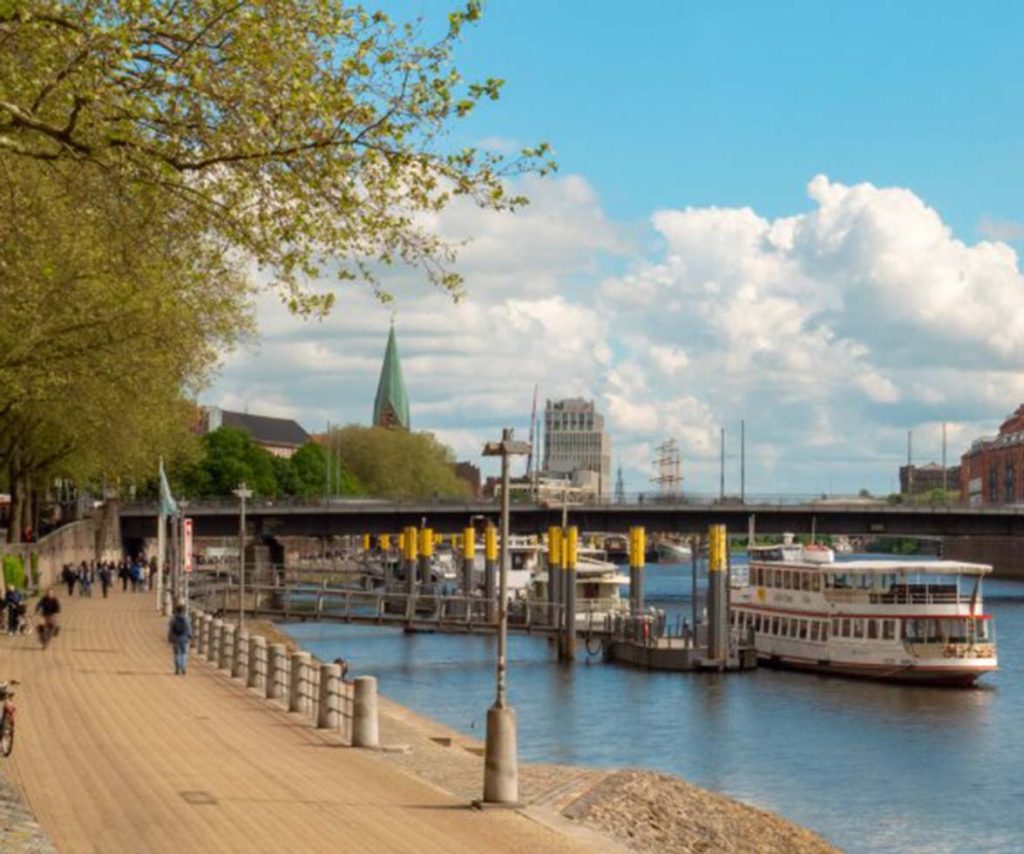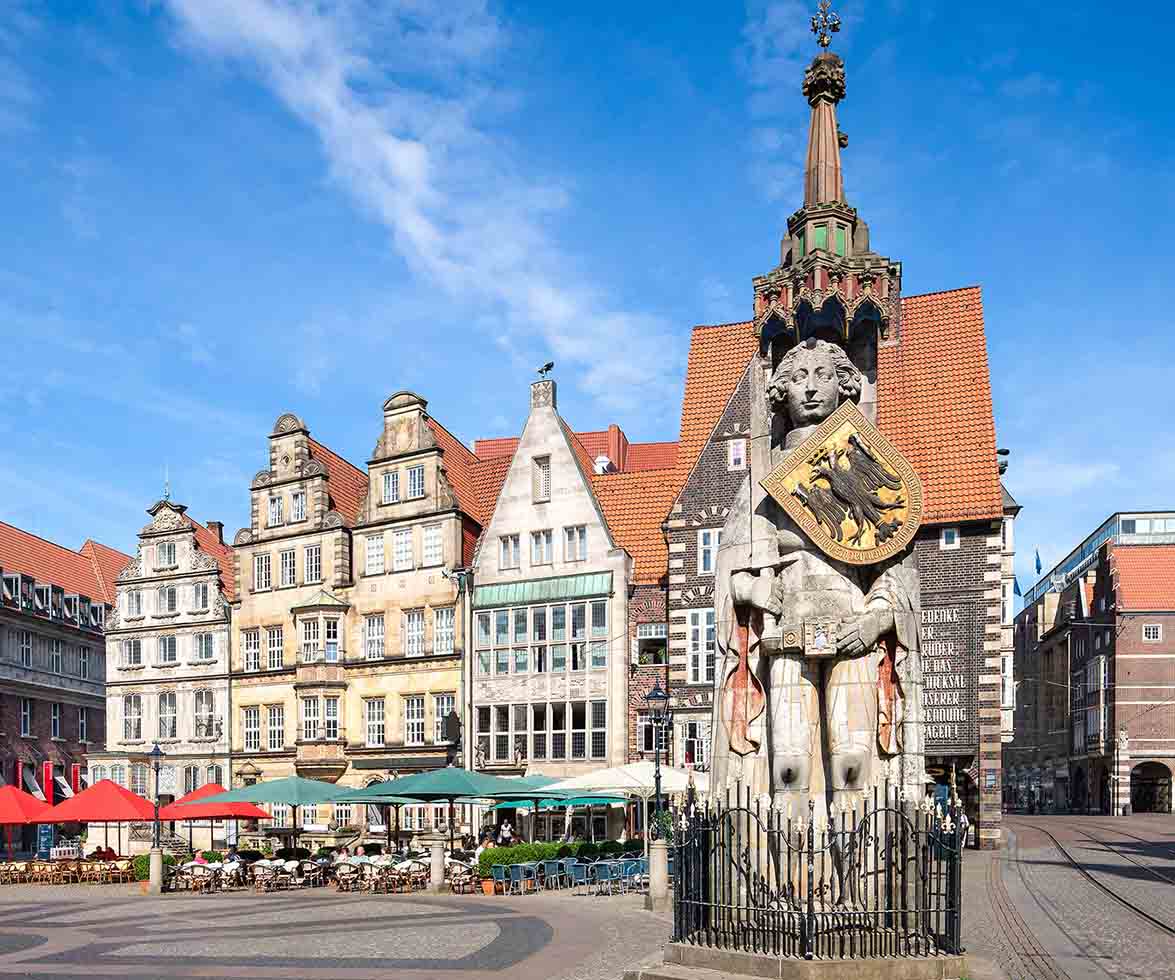There’s something about Bremen that strikes a perfect balance between the old and new. Whether you’re stepping into its medieval market square or walking past sleek modern architecture, this city brings you the best of both worlds. On a crisp day in early February, I set out to explore Bremen’s history and its vibrant, contemporary spirit. The city is small enough to see in a day, but the contrast between its ancient heart and the lively modernity that surrounds it made every corner worth the time.
1. The Bremen Hauptbahnhof: First Impressions
As soon as I arrived at Bremen’s Hauptbahnhof (main station), I could feel the city’s unique vibe. The station itself is a blend of old-world charm with a modern twist. The building, dating back to the late 19th century, is grand, with detailed brickwork and large archways. It feels like a piece of history standing proudly amidst the busy commuters and travelers. Inside, I was immediately struck by the sleek, modern shopping mall atmosphere that wraps around the old structure.
The station area had a buzz to it, but there was also a calmness, like the city itself was not in a rush. I could already tell Bremen was one of those cities where history and modern life coexisted without clashing.
2. Strolling into the City Centre: Discovering Bremen’s Heart
I started my day with a walk toward the city center. From the station, it’s only a 15-minute walk to the historic Altstadt (Old Town), which is Bremen’s heart and soul. The first thing I noticed was the cobbled streets and the narrow, charming alleys that seemed to pull me in every direction. Bremen has preserved its medieval charm, and walking around felt like stepping into a time machine, even though the city had a contemporary energy that was undeniable.
The medieval feel didn’t stop me from noticing the colorful street art on the walls, cafes spilling out onto the sidewalks, and the sleek modern shops that line the streets. The fusion of old buildings and new styles was something I hadn’t seen quite like this before. There was an easy harmony between the two, each enhancing the other.

3. The Bremen Roland Statue and Town Hall: A Monument to History
One of the first landmarks that caught my attention was the Roland Statue, standing tall in the market square. This monument, dating back to 1404, represents Bremen’s independence. As I stood before it, I could imagine centuries of history unfolding right where I was standing. The Roland Statue was one of those rare moments when the weight of history felt tangible.
Right next to it is the Bremen Town Hall, an incredible example of late Gothic architecture. The intricate facade, with its ornate decorations and towering spires, is a perfect snapshot of the city’s past. The Town Hall, like the Roland Statue, is a UNESCO World Heritage site and feels like the anchor of the Altstadt. I spent a good amount of time just admiring the building from every angle, appreciating the little details on the facade and the massive doors that had clearly seen centuries of travelers and citizens walk through.
Even though the Town Hall is ancient, the square around it has a modern vibe. Cafes and small shops fill the surrounding area, and street performers add an upbeat, contemporary layer to this historic square.
4. The Bremer Stadtmusikanten: A Fairytale Tale Come to Life
While the Town Hall was incredible, the most whimsical part of Bremen had to be the famous Bremer Stadtmusikanten, or the Bremen Town Musicians. This statue was a favorite of mine, and you can’t help but smile when you see it. The statue is based on the Grimm Brothers’ fairytale about a donkey, dog, cat, and rooster who set off to Bremen to become musicians. The bronze statue is placed right next to the Town Hall, and as I walked by, I couldn’t resist taking a picture of the quirky animals stacked on top of each other.
What made this site interesting wasn’t just the statue itself, but the number of people stopping to take photos, laugh, and share the story. It’s one of those places where the past and present collide, and the connection between the centuries-old fairytale and today’s visitors felt very real.
5. The Schnoorviertel: A Step Back in Time
A short walk from the market square took me to the Schnoorviertel, Bremen’s oldest district. This area felt like it was frozen in time. Narrow alleys with crooked, timber-framed houses lined the streets, each building telling a story of the city’s past. There’s something about Schnoor that feels untouched by modernity, and yet, as you walk around, you notice small art galleries, quirky shops, and modern cafes tucked between the old buildings. It was a place where the past was still alive but didn’t feel like it was being held hostage by time.
I couldn’t help but marvel at the buildings here. Some had small gardens tucked away in courtyards, while others had intricate details carved into their wooden frames. The cobbled streets creaked underfoot, adding to the charm of the area. As I wandered, I could easily imagine what life in Bremen would have been like hundreds of years ago, but I was also aware of the modern world that surrounded it.
6. The Weser Promenade: Where Old Meets New

After a few hours of soaking in the medieval heart of Bremen, I decided to head toward the Weser River, where the city’s old-world charm continues, but with a more contemporary flair. The Weser Promenade offers a perfect view of the city’s modern side. As I walked along the river, I passed sleek glass buildings and modern restaurants that lined the water’s edge. There were people jogging along the promenade, and the buzz of the city felt alive and vibrant.
The juxtaposition of the modern buildings and the historic city center was striking. The way Bremen has integrated new architecture without overshadowing its past was something I found particularly impressive. Here, you could sip coffee by the river and still see the ancient structures on the other side, a seamless connection between the past and present.
7. The Überseestadt: The Modern Bremen
If you want to explore even more of Bremen’s modern side, a quick tram ride from the city center takes you to Überseestadt, a district that has transformed from a historic port area into one of the most exciting places in Bremen today. The modern architecture here is something else. Glass and steel dominate the skyline, with buildings designed in sleek, futuristic styles. This part of Bremen felt like a contrast to the historic Altstadt, yet it had a certain charm of its own. It was also home to some excellent restaurants, which I had planned to visit next.
But even here, there were reminders of Bremen’s history. The old port cranes and warehouses have been preserved and repurposed, giving the area a unique blend of industrial and contemporary style. I strolled through the area, enjoying the balance of the new and the old, feeling like I was witnessing Bremen’s evolution in real-time.
